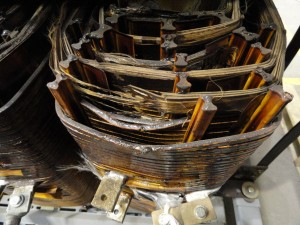Electrical Transformer Voltage Taps Cause Open Circuit
MIDWEST Engineering got a call from a plant supervisor that bought a 225 kva general purpose dry type power transformer, 480 volts to 208 volts. They had installed the transformer and energized it. But they swore they got no voltage at the secondary, 208 volt, side. The transformer was tested by MIDWEST before it was shipped, including being energized at full voltage. In addition, an inductive load was put on the transformer as part of our final testing procedure. But they were certain their power transformer had failed because they had just a couple volts at the output when energized at 480 volts on the primary. And they said they didn’t do anything to the defective transformer. So we ended up shipping them a second unit and asked them to send the suspect transformer back. When the suspect transformer arrived, the switchgear shop checked it out and found no visual indications of failure. If an electrical power transformer fails such that there is no voltage on any secondary phases, we would expect to find the failure during a visual inspection. In a new or reconditioned electrical power transformer, during a three phase fault, a lot of energy must go somewhere and it is usually pretty obvious. In this case there was absolutely nothing visual to indicate a failure. Our first transformer test, turns ratio, helped us find the problem immediately. The buyer had changed the transformer taps, but they did not remove the varnish on the unused tap tabs sticking out the side of the transformer windings. Sometimes these tabs are totally insulated with varnish and it has to be cleaned off thoroughly before connecting the tap jumper. This case was a little bizarre because the bolts holding the jumpers did not make contact on the inside of any of the holes in the insulated tap tabs. Pretty strange to not have any contact at any of the three jumpers. We have seen this problem before, but usually one or two of the tap jumpers makes some contact and a third is open. When changing taps, one needs to clean the jumpers and the taps so as to make sure there is a good current carrying connection. A poor heating connection can do some real damage and may not be noticeable until it’s too late. So, in a way, they got lucky.
